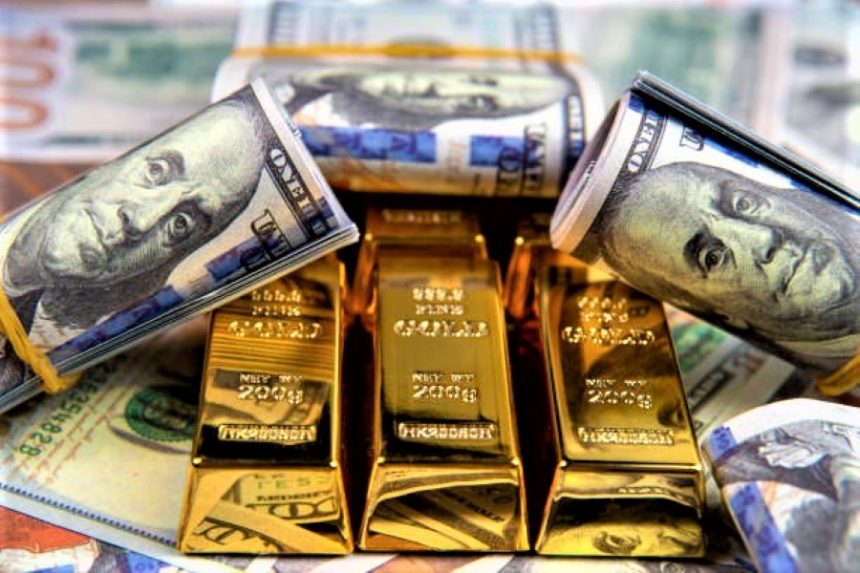Gold Holds Above $3,200 Amid Trade Optimism and Fed Rate Cut Hopes.
Gold (XAUUSD) remains on the defensive but manages to stay afloat above the crucial $3,200 psychological level in the early European session on Wednesday. Despite modest intraday losses, the yellow metal finds support from lingering geopolitical tensions and dovish expectations surrounding the Federal Reserve. However, upbeat risk sentiment driven by de-escalation in US-China trade tensions is capping the metal’s safe-haven appeal.
Trade Truce Talk Trims Gold Safe-Haven Premium
One of the primary factors weighing on gold is the improving tone in US-China relations. President Donald Trump’s comments earlier this week suggesting that tariffs on Chinese goods will not be reinstated at previous punitive levels have stirred optimism across global financial markets. Trump’s further remarks in a Wednesday interview emphasized the strength of the US-China relationship, echoing hopes for a long-lasting resolution to trade disputes.
This renewed optimism has tilted investor sentiment towards riskier assets, boosting equity markets in Asia and Europe while diminishing the immediate need for traditional safety plays such as gold.
US CPI Miss Strengthens Rate Cut Bets and Caps Dollar Upside
While gold has struggled to attract strong buying interest, Tuesday’s softer-than-expected US Consumer Price Index (CPI) reading has provided a cushion for the precious metal. The BLS reported that headline inflation cooled slightly to 2.3% YoY in April from 2.4% in March. The core CPI, excluding food and energy, held steady at 2.8%, in line with market expectations.
This data reinforced market speculation that the Fed will begin easing monetary policy in the latter half of 2025. Fed funds futures are now pricing in around 56 basis points of rate cuts this year. These dovish expectations have weakened the US Dollar from its one-month peak earlier in the week, indirectly supporting gold prices, which are priced in USD and typically move inversely to the currency.
Geopolitical Risk Still Looms Despite Trade Progress
Although trade optimism is putting downward pressure on gold, geopolitical tensions continue to simmer. Notably, Russia and Ukraine are preparing for their first high-level peace talks since 2022, scheduled to take place in Istanbul this week. This meeting, expected to include US diplomatic officials, could shape the direction of the broader geopolitical landscape.
Further, reports that the Iranian-backed Houthi militia launched a hypersonic ballistic missile targeting Israel — intercepted over Tel Aviv — have added to global security concerns. Although such events have yet to spark a full-fledged safe-haven rally in gold, they are contributing to a reluctance among traders to heavily short the metal at current levels.
Fed in Focus as Traders Await Central Bank Clarity
With no major US economic releases scheduled for Wednesday, the market’s focus now shifts to commentary from Fed officials. Several members of the Federal Open Market Committee (FOMC) are slated to speak later in the day, and their tone will be crucial in determining whether markets continue to bet on rate cuts.
If policymakers double down on concerns about disinflation and economic softening, gold could benefit further from a weakening USD. Conversely, a more hawkish tone might revive dollar demand and weigh on XAU/USD.
Technical View: Gold Holding Steady Above $3,200
From a technical perspective, gold is trading comfortably above the $3,200 level — a key psychological and structural support zone. While the metal has failed to capitalize on Tuesday’s post-CPI bounce, it has also not shown signs of aggressive bearish momentum.
Key support levels to watch:
- $3,200 – immediate floor and psychological anchor
- $3,185 – recent swing low and stronger support
- $3,150 – 50-day moving average
Resistance levels:
- $3,235 – intraday pivot and minor resistance
- $3,260-$3,270 – supply zone capped multiple rallies this month
- $3,300 – major psychological barrier
Unless there’s a clear break below the $3,200 mark with volume, bearish conviction remains limited. Traders may wait for fresh directional cues from upcoming Fed speeches or Friday’s University of Michigan consumer sentiment data before taking large positions.
Investor Sentiment: Cautious but Resilient
Investor sentiment towards gold remains cautious but not overtly bearish. The yellow metal continues to enjoy support from longer-term buyers who see the Federal Reserve’s eventual shift towards rate cuts as a bullish catalyst. Additionally, central bank buying — particularly from emerging markets — remains a structural pillar of support for gold, even if short-term speculative flows are driven by macro data and geopolitical headlines.
The lack of a clear catalyst to push prices meaningfully higher or lower suggests that gold may remain rangebound in the near term, oscillating between USD and bond yield dynamics on one side, and geopolitical risk premiums on the other.
Macro Themes Driving Gold This Week
1. Trade Relations:
The tone of US-China negotiations has taken a decisive turn for the better, removing some tail-risk premium from gold.
2. Inflation Data:
CPI cooling to 2.3% supports rate cut expectations, weakening the dollar and lending mild support to gold.
3. Geopolitical Tensions:
Middle East conflict and Ukraine peace talks continue to hover in the background, capping gold’s downside.
4. Fed Expectations:
Traders see more than 50bps of rate cuts in 2025; Fed speeches this week could validate or challenge that view.
5. Dollar Dynamics:
The greenback has pulled back from recent highs, but remains sensitive to incoming Fed commentary.
Outlook: Balanced Bias with Risk Skewed to the Upside
While gold lacks the momentum to launch a breakout rally, downside appears limited unless risk sentiment improves further and/or the Fed adopts a hawkish shift. The convergence of soft US inflation, tentative geopolitical risks, and unclear Fed policy bias means traders may prefer a wait-and-watch approach in the short term.
Gold’s resilience above $3,200 suggests that long-term investors continue to view it as a hedge amid an uncertain macroeconomic environment. However, sustained upward momentum would likely require a catalyst — such as sharper deterioration in inflation data, escalating geopolitical tensions, or a clear policy pivot from the Fed.
[faq-schema id=”39580″]









